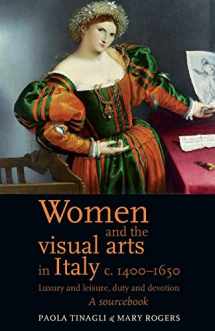
Women and the visual arts in Italy c. 1400–1650: Luxury and leisure, duty and devotion: A sourcebook
Book details
Summary
Description
The anthology of original sources from c.1400 to 1650, translated form Italian or Latin, and accompanied by introductions and bibliographies, is concerned with women’s varied involvement with the visual arts and material culture of their day.
The readers gains a sense of women not only as patrons of architecture, painting, sculpture and the applied arts, but as users of art both on special occasions, like civic festivities or pilgrimages, and in everyday social and devotional life. As they seek to adapt and embellish their persons and their environments, acquire paintings for solace or prestige, or cultivate relationships with artists, women emerge as discerning participants in the consumer culture of their time, and often as lively commentators on it. Their fervent participation in religious life is also seen in their use of art in devotional rituals, or their commissioning of tombs or altarpieces to perpetuate their memory and aid them in the afterlife.


We would LOVE it if you could help us and other readers by reviewing the book
Book review



